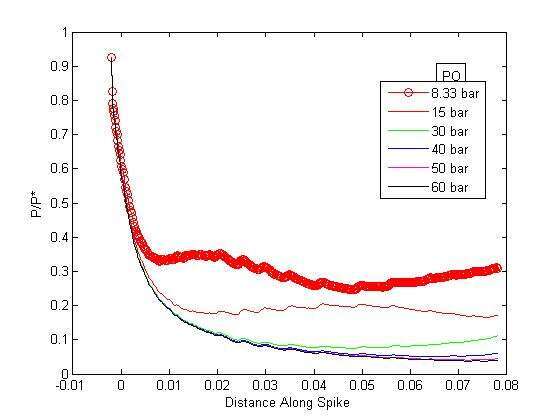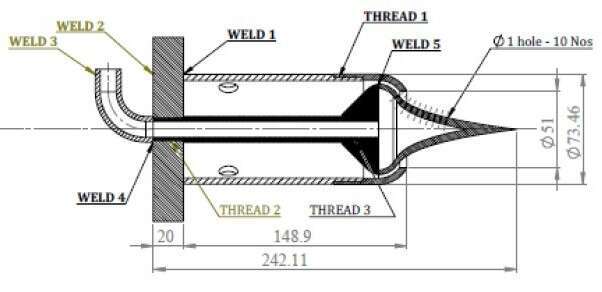The objective of present study is to carry out flow characterization and performance evaluation of Annular Aerospike Nozzle, a non-conventional nozzle being studied worldwide. This external expansion nozzle contrary to the presently used internal expansion bell nozzle is expected to perform optimally over the entire flight regime, due to the distinct advantage of altitude adaptation during flight allowing maximum thrust to be delivered throughout the entire trajectory of the rocket. An additional advantage that aerospike nozzle has over the bell nozzle is that it can be truncated to reduce the weight and length of the nozzle without much loss in thrust [2].
The studies on Aerospike nozzles are scattered in various regimes based on many configuration and flow parameters. Most of the works are focused to particular areas of specific interests [3], [4]. Comprehensive studies on neither the performance of Aerospike nozzle nor the flow physics related to parametric studies based on flow properties and configuration are available till date. For example, the thrust prediction remains a challenge as the nozzle plume shapes vary with the back pressure conditions where the conventional thrust equations fail to predict the thrust. In this work, both CFD analysis and cold flow experiments are planned with a clear objective of capturing the actual performance data on annular aerospike nozzles by varying different flow parameters like chamber pressure, and back pressure, and configuration parameters such as, wall contour and % truncation of the spike (0, 20, 40, 60, 80). The nozzle thrust will be estimated through spike static pressure data and by direct measurement using load cells.
The Aerospike nozzle contour for isentropic, inviscid, irrotational supersonic flow of any working fluid and for any exit Mach number is designed using a MATLAB code based on the approximate method proposed by G Angelino [1]. The flow field of the nozzle created by the code is independently checked with using computational fluid dynamics software ANSYS FLUENT 12.01. In FLUENT pressure base, 2-D axisymmetric condition is selected along with Spalart–Allmaras viscous model and only the steady-state solutions were considered. From fig. 1. we can see that major thrust is obtain by 40% of spike thrust, so we can truncated the remaining spike without much loss of thrust. In fig. 2 we can see the variation of wall pressure force, wall specific impulse and coefficient of wall thrust with stagnation Pressure.
Experiments will be carried out at Cryo High Altitude Test facility of ISRO, Mahandragiri. This facility contains a vacuum chamber with a volume of 160m3 in which minimum pressures up to 100mbar can be sustained for the proposed experimental conditions. Dry GN2 will be used as working fluid for the experiments. Fig. 3 shows the aerospike nozzle. Experiments will be conducted for by varying the chamber pressure from 3 to 60 bar (a) and back pressure from 1 to 0.1bar (a) for full length and truncated spikes (0, 20, 40, 60, and 80 %). The pressure data on the spike wall will be acquired through 10 numbers of pressure sensors and the thrust will be measured directly using load cells. Flow visualization will be carried through color background oriented schlieren to qualitatively asses the flow fields.
References:
- Angelino, G., Oct. 1964, “Approximate Method for Plug Nozzle Design”, AIAA Journal, Vol. 2, No. 10, pp. 1834-1835.
- Sule, W. P., and Mueller, T. J., “Annular Truncated Plug Nozzle Flow field and Base Pressure Characteristics,” Journal of Spacecraft and Rockets, Vol. 10, No. 11, 1973, pp. 689–695.
- Takashi ITO, Kozo FUJII, “Numerical Investigation of the Base-Flow Characteristics of Axisymmetric Aerospike Nozzles”, Trans. Japan Soc. Aero. Space Sci., Vol. 45, pp. 108-116, 2002.
- B. Verma, M. Viji, “Base Flow Characteristics of a Linear Plug Nozzle with Freestream Effects”, 45th Joint Propulsion Conference and Exibit.




